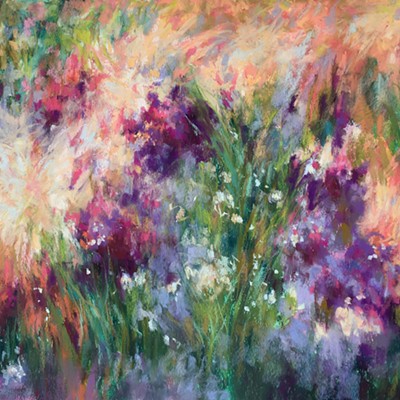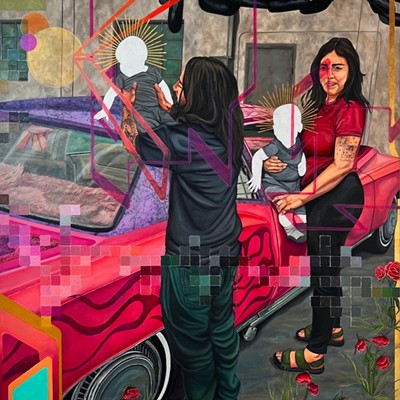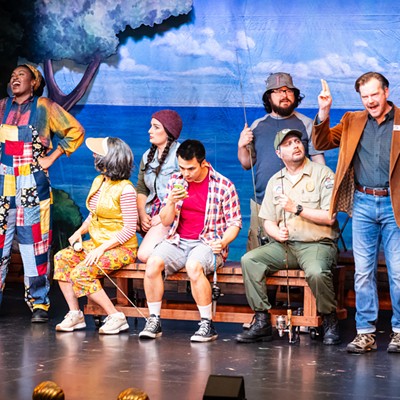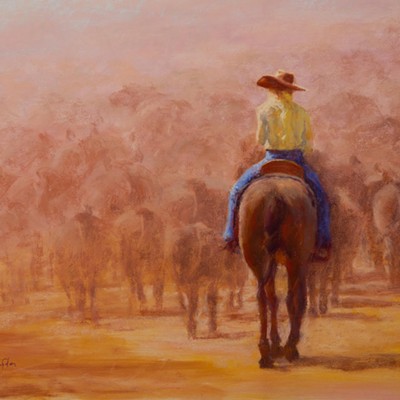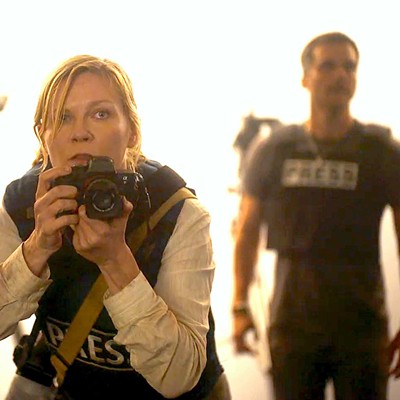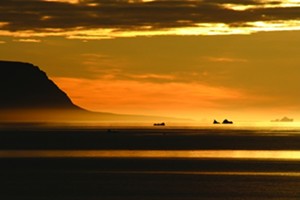
One must admit; it’s pretty easy living on the Central Coast. Take a look at the clothes and houses the ancient Chumash would make and you get the idea.
The photography show of one local showcases not the Central Coast, but one of the most difficult places in the world for life to flourish: Greenland.
Lee-Volker Cox—whose exhibit “On Top of the World: A Collection of Photos from Greenland and Life inside the Arctic Circle” is showing at the Santa Maria Public Library through this month—is a recently retired United States Air Force director of operations. His military career took him many places, one of which was Thule Air Force Base on the western coast of Greenland.
“I was up there for a year acting as commander of the Thule Airbase,” he said. “It’s America’s northernmost base and it’s the largest overseas Air Force base, land-wise.”
As Cox will tell you, land is not at a premium in Greenland, as most of it is uninhabitable for humans and many other forms of life.
“The wildlife, just like the people, have to be pretty rugged to survive the extreme temperatures,” he said. “The Inuit survive up there with little to no greenery; for thousands of years, they have survived off the ocean.”
When Cox wasn’t busy on base, he spent much time with the Inuit population of Greenland, taking pictures of families at home, on hunting expeditions, driving dog sledges, and more.
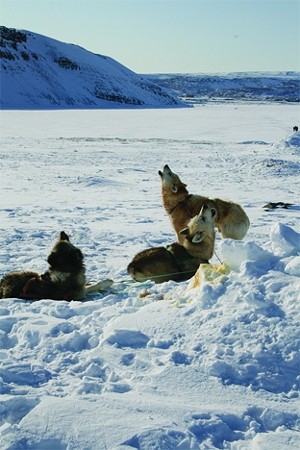
“I could have done a show just on Inuit hunters or culture,” he said. “But I wanted a range so people could get a flavor of what it is like up here.”
The Inuit are expertly adapted to their environment, which is a harsh one at that. Cox’s exhibition captures much of Greenland’s natural wonders as well as the people who call the place home.
“Something that really amazed me was the colors you can get in the sky,” he said. “There is no pollution up there so it’s really clear … because of the low angle of the sun, the sunrises and sunsets were amazing.”
The sunrises and sunsets, Cox explained, could be equivalent in color to ones we enjoy on the Central Coast, only lasting much longer, perhaps for hours. Greenland, the majority of which is in the Arctic Circle, is known as the “Land of the Midnight Sun” because of the length of daylight and consequent darkness.
“At Thule, the sun would come up and, for almost a little over three months, it wouldn’t go down,” he said. “Some people handle the darkness really well, some people handle the light really well, and some people have challenges with both.”
The climate, harsh and unforgiving, is an impersonal thing. The people of Greenland, however, are much warmer.
“It was surprising, the friendliness and openness of the people,” Cox said. “Most of the natives of Greenland still live a subsistence lifestyle, they still live off of hunting and fishing. Things that we take for granted, they just don’t have.”
Cox’s vision for his photography show is to primarily educate the community about Greenland. Whether through the Inuit people, the wildlife, or the geography, he gives a clear snapshot both with photography and the descriptions he pairs with each photo.
“I had had cameras in the past, but before I went [to Greenland] I decided to buy a nice camera because I thought this was a once-in-a-lifetime opportunity,” he said. “It’s to educate people on what it is like, but also to illustrate the beauty and starkness of Greenland and its people.”
Arts Editor Joe Payne can’t imagine having to wear more than two layers. Contact him at [email protected].


